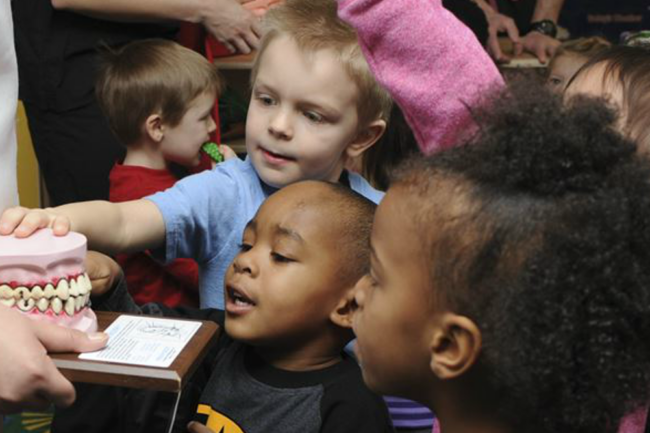Community Perspectives on Access, Quality, and Invasiveness of Dental Care

Our Approach
In collaboration with community-based and advocacy organizations, Community Catalyst hosted listening sessions with community members in three states: Colorado, Nebraska and Ohio.
- In each state, we partnered with a local organization with a strong track record of community engagement and experience working on oral health issues. Together, we hosted two virtual community listening sessions in each state for a total of six sessions.
- Community Catalyst staff collaborated with the local organizations to design conversation guides that included structured questions and prompts to guide the listening sessions.
“People never stop to think that it is a luxury to take care of your oral health.”
Key Themes
Key themes were uncovered across the six listening sessions conducted. The themes centered around three overarching topics: access to care, experiences with care and invasiveness of care.
Conversations pointed to a reality that having access to care is not a dichotomy where some people have it and others don’t. Access to care exists on a spectrum that includes factors such as insurance coverage, the ability to find a dentist and get to the location where care is provided, and the ability to pay for services. Additionally, factors associated with quality of care — such as how patients are treated, experiences with discrimination and invasiveness of care — intersect with issues related to access to paint a holistic picture of what it means for dental care to truly be accessible, affordable and respectful.
Access to Dental Care
Across all listening sessions, similar access barriers arose related to insurance status, coverage of specific services, provider availability and accessibility, and social determinants of health like transportation and language access.
Participants consistently described access as less of a binary — you have access or you don’t — and more of a spectrum, naming multiple dimensions associated with access to care. Participants also consistently drew connections between access and quality — the quality of care received and how individuals, their families and their communities were treated when they accessed care.
Experiences With Dental Care
Being able to find a provider, get an appointment and pay for care was only part of the picture of access for participants. Many participants described the quality of the care they were able to get as a component of access.
For example, if a person is physically able to get care, but if that care isn’t respectful and transparent, the experience feels less accessible.
Invasiveness of Dental Care
Participants routinely described experiencing their dental care as invasive. These listening sessions revealed that, in order to fully understand how people conceptualize the “invasiveness” of dental care, we need to also focus on accessibility, affordability and patient experience.
“It makes no sense to say pain comes with poverty.”
Policy Recommendations
At a high level, our conversations highlighted the critical need to center community perspectives in the design and implementation of equitable solutions.
Based on the discussions, several policy opportunities arose that would address the barriers and ideas for solutions that participants named.
- Make Medicaid adult dental benefits mandatory
- Improve scope of practice and expand the dental workforce to include providers like dental therapists
- Expand access to minimally-invasive care and patient choice
- Address transportation access and other social determinants of oral health
“I could see the difference between the way I was treated and the way some other patients of color [were treated].”
Conclusion
The community listening sessions reflected several important key themes about community perspectives on access to and experiences with dental care. People were clear that they understood the importance of oral health, its connection to other areas of their health and lives, and the structural and systems-based barriers that have often left dental care out of their reach.
People clearly described key access barriers and were eager to recommend clear solutions for policy and systems change that can be addressed via coverage requirements, dental workforce expansions, minimally-invasive care, and opportunities to address social determinants of health.
Lack of trust in the oral health system was frequently described as something that lives palpably in peoples’ family histories — the pain and trauma participants described with the oral health system did not start or end with them. It is clear that patient choice and community-informed solutions must be at the forefront of all oral health policy decisions to ensure care is trauma-informed and trustworthy.
AcknowledgementsAcknowledgements
This report and the associated community listening sessions were developed and conducted in collaboration with the specific guidance, support and feedback of:
Adam Fox and Mannat Singh, Colorado Consumer Health Initiative
Milo Marquez, Colorado Latino Leadership, Advocacy, and Research Organization
Freedom Thompson and Sarah Maresh, Nebraska Appleseed
Ronald Browder and Lisa Stafford, Ohio Federation for Health Equity and Social Justice
While we do not name the community listening session participants here or throughout this report for confidentiality reasons, we are deeply indebted to their work, commitment and trust throughout this project.
This report was developed with support from the CareQuest Institute for Oral Health.


